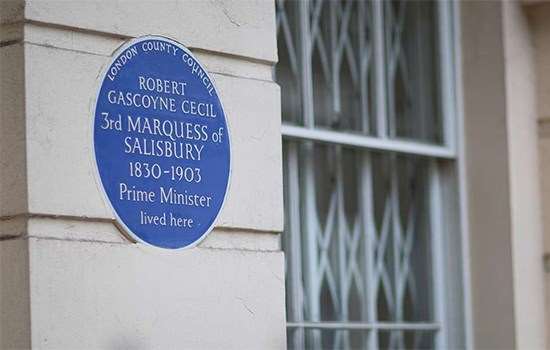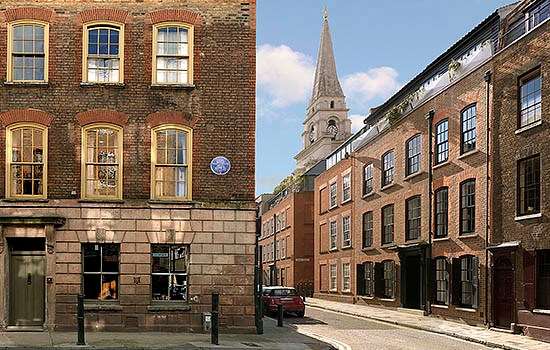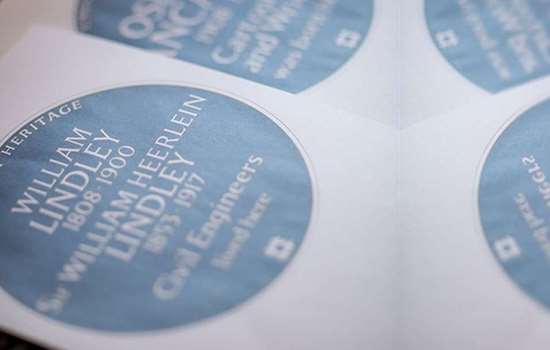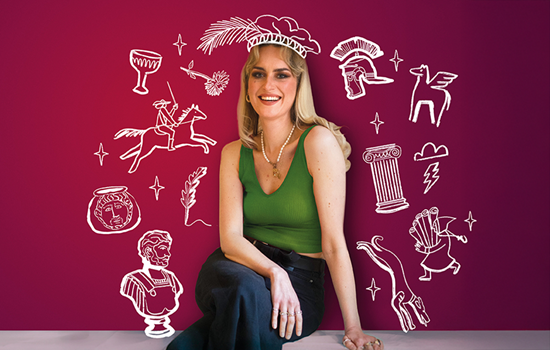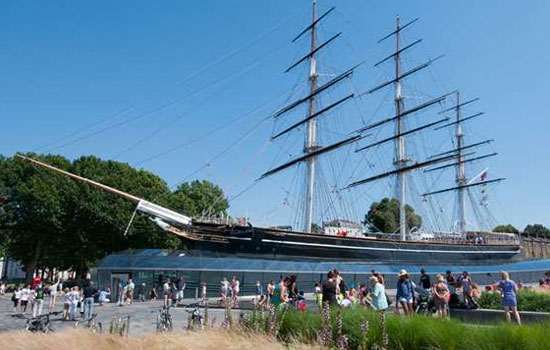The First English Heritage Plaque: Oskar Kokoschka
English Heritage took over the London Blue Plaques Scheme on 1 April 1986, following the abolition of the Greater London Council.
The first to feature the English Heritage name and portcullis logo was that of artist Oscar Kokoschka, which was installed on 6 August. Over 370 plaques have gone up under English Heritage’s stewardship, which now relies on the generous donations of patrons to continue the 150-year-old tradition of honouring interesting and deserving historical figures in London on the buildings that they lived and worked in. The 900th plaque went up in 2015.
SEE IT AT: Eyre Court, 3-21 Finchley Road, St John’s Wood, London, NW8
The rectangular Plaque: Hubert Parry
Not all plaques are blue, or round. The composer and musician Hubert Parry – most famous for the hymn, and unofficial English anthem, Jerusalem – has a rectangular plaque. This shape was thought to better fit the narrow space between the windows on his former home in Kensington.
Other rectangular blue plaques include those for Clive of India, the novelists Wilkie Collins and Arnold Bennett, and the former premises of the Collins Music Hall on Islington Green.
SEE IT AT: 17 Kensington Square, Kensington, London, W8
The Oldest Plaque: Napoleon III
The French Emperor Napoleon III holds the distinction of having the oldest surviving London plaque, which dates from 1867. The very first plaque was for Lord Byron but it's long gone. Napoleon was still alive when the plaque went up, a unique distinction for a plaque recipient.
His route to the top may be said to have started at the house in St James' that bears the plaque. It was from here that he departed for France after the overthrow of the Bourbon king Louis Philippe in 1848. He left in such haste that his landlord found the bath still full of water.
SEE IT AT: 1C (formerly 3A) King Street, St James's, London, SW1
The Odd Couple: William Holman-Hunt and Cetshwayo Ka Mpande
There are 19 houses in Greater London that bear two blue plaques. A pairing of great contrast are the painter William Holman-Hunt and Cetshwayo ka Mpande, King of the Zulus. The plaque for Hunt, who was a prominent member of the Pre-Raphaelite Brotherhood, went up in 1923 on his last home.
Cetshwayo had stayed at the house in the summer of 1882 following his defeat and capture by British forces. During his time in Melbury Road, he met with Queen Victoria and Prime Minister William Gladstone.
SEE IT AT: 18 Melbury Road, Holland Park, London, W14
The Plaque that moved House: Mary Seacole
The Jamaican-born nurse Mary Seacole, best known for her work in the Crimean War, was originally commemorated in 1985 at 157 George Street, Marylebone. But that building was taken down in the late 1990s. In 2007, the plaque was re-erected on a house in Soho Square, where research showed that Seacole had lived in 1857.
Mary Seacole's plaque isn't the only one to have been moved. In 1963, 100 years after he originally suggested the plaques scheme, politician William Ewart's plaque was installed at 16 Eaton Place. This was after its original berth in Cambridge Square had fallen to a wrecking ball.
SEE IT AT: 14 Soho Square, Soho, London, W1
The oldest Plaque to a Woman: Frances Burney
It took the Society of Arts 10 years to put up a 'commemorative tablet' to a woman after the Scheme started in 1866. That was to Sarah Siddons, one of the greatest English tragic actresses, who was famed for her portrayal of Lady Macbeth. The house was demolished in 1905.
The oldest surviving plaque to a woman is to the novelist, diarist and playwright Frances Burney, which went up in 1885. It says something about attitudes at that time that her married name - Madame D'Arblay - is given greatest prominence in the inscription.
SEE IT AT: 11 Bolton Street, Mayfair, London, W1
The secret of how Blue Plaques are made
Artisan ceramicists, Frank and Sue Ashworth, have been making London's Blue Plaques for English Heritage since 1984.
We visited them at home in Cornwall to find out more about the process and their role in the scheme.
Meet the chairman
Join the Chairman of the Blue Plaques scheme, Professor Ronald Hutton, as he explains how we decide who to honour.
Meet the Professor
